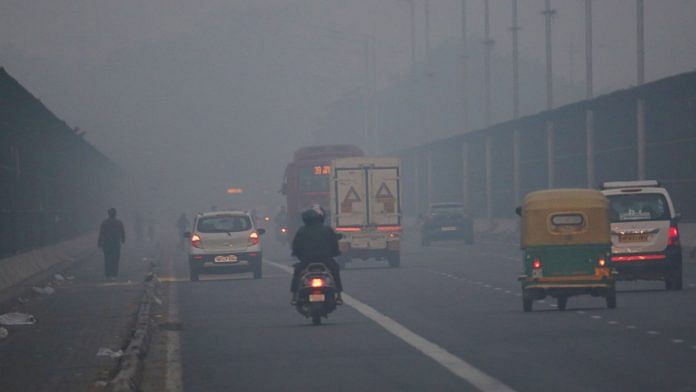Bengaluru: A new study has found that the mortality risk from indirect sources of air pollution other than vehicles and industrial emissions falls disproportionately on lower-income households in India.
Indian households are a known contributor to high levels of particulate matter PM2.5, primarily due to biomass cooking stoves. Cooking stoves contribute to indoor or household air pollution (HAP).
The study, published in the journal Nature Sustainability Monday, states that mortality risk from air pollution is an order of magnitude or ten times higher for poorer individuals and families.
The study further compared contributions to pollution by income decile groups or from the poorest 10 per cent to the richest 10 per cent of the population. The team found that high-income, urban Indian households produce a majority of ambient or outdoor air pollution through vehicle emissions, electricity generation, industries, and manufacturing, but the health risks are still shouldered more by lower-income households who do not contribute much to it.
The authors of the study ask to enforce emission controls in an industry-wide manner, including through the use of clean cooking fuels in India.
What is HAP
HAP is a major source of PM2.5, particles or pollutants that are less than 2.5 microns in width. In the long-term, exposure to PM2.5 particles can lead to lung diseases, heart disease, and even cancer, and the pollutants can cause irritation to eyes, nose, and respiratory tract. Previous studies have shown that up to 98 per cent of Indian children might be exposed to high and unsafe levels of HAP.
But despite the high prevalence of HAP, its contribution to overall outdoor pollution is only about 40 per cent compared to other sources from urban households in India. India has 35 cities among the top 50 most polluted cities in the world, thanks to outdoor air pollution from various sources as well as the country’s unique topography which collects pollutants in the Himalayan region.
Experts have expressed concern in the past about the lack of monitoring levels of HAP in rural households across the country as well as the lack of cleaner cooking alternatives. In 2016, only 56 per cent of Indian households had access to LPG while the number today is 80 per cent. However, in a country India’s size, the risk from HAP continues to remain extremely high.
The findings from the study add to a growing body of evidence about disproportionate contribution to air pollution by the rich, and disproportionate exposure and health risks among lower-income population groups globally.
Also read: From India to US to Turkey to China to Brazil, it’s not ‘crazy weather’ but climate change






